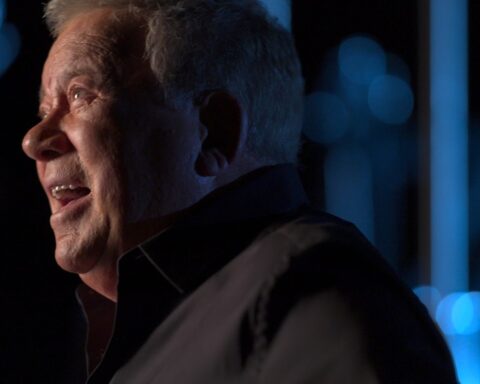Leaning into the Wind: Andy Goldsworthy
Dir. Thomas Riedelsheimer
Starring: Andy Goldsworthy
Andy Goldworthy is a land-based sculptor, who makes work inspired by the natural elements existing in the area, which he is commissioned to embellish through his practice. Yikes, you’re probably thinking. I thought I was going to read a film review, not something obscure about a post-modern art practice.
Relax, my friend. This is film review of—let’s admit it—a sequel to a hit from 2001, Rivers and Tides. Thomas Riedelsheimer, who won best German doc awards for that film, returned to follow up on Goldsworthy’s career, which has gone from strength to strength over the past 17 years.
Though it’s hard to describe Goldsworthy’s work, when you see it, the effect is quite simple and beautiful. He reacts to local environment and history in order to honour it. In a famous piece, the Arch at Goodwood, he built a stone bridge, lovingly curved with local minerals, over a wall. In a Yorkshire public park, he placed a tree branch inside a stone based enclosure. In San Francisco’s Presidio, he built a Spire commemorating the loss of nature by using old trees to make an outstanding new sculpture.
By the time Riedelsheimer returned to document Goldsworthy, the sculptor had continued in his path towards international recognition. Leaning into the Wind moves from Brazil to Goldsworthy’s native Scotland over to Gabon—finally landing in the USA’s historic New England. To his credit, Goldsworthy has remained the phlegmatic, very low-key character, whose love of nature helped to endear him to many people in Rivers and Tides.
But things have changed. Goldsworthy and his first wife Judith divorced and soon after, she died. He’s married again and has started a second family. Goldsworthy does talk about these personal issues on screen but Riedelsheimer doesn’t contextualize them.
In its place, Riedelsheimer has emphasized Goldsworthy’s on-going relationship with his oldest daughter Holly, who is now his assistant. Their loving, if occasionally tense interactions, make up much of the intimate elements of Goldsworthy’s life in the film. But neither directly talks about what happened during what must have been a very dramatic time.
Riedelsheimer’s main strategy is to show Goldsworthy through his attitudes and feelings towards nature. He shoots Goldsworthy with a mouth full of flowers in one scene. In another, the sculptor’s body is splayed over a couple of small branches, which he shakes to release pollen. In several, he is seen lying on stones—in preparation for a piece he wants to create called Sleeping in Stone.
Goldsworthy says very little as Riedelsheimer follows him while he works towards creating new sculptures for all of the locales he’s visited—from South America to the US and UK to Africa. There’s an emotional crisis at one point as Goldsworthy realizes that he’ll have to fundamentally change a piece because he can’t cut into bedrock to make a sculpture. The man truly loves nature and only displaced rocks are acceptable in his art practice: it’s a fact he only realizes during the film.
Leaning into the Wind is an evocative film about an artist, who truly identifies with farmers and workers. Andy Goldsworthy’s love of nature is ever present. With the aid of visionary composer Fred Frith, Riedelsheimer has made a slow gorgeous film that affirms the glory of nature and the spirit of an artist who is truly moved by all aspects of the world: the trees, the stones, the leaves, the ants—everything.
Is Leaning into the Wind a spiritual film? If nature worship—paganism, I suppose—is acceptable as a religious practice, perhaps it is. In any case, Andy Goldsworthy’s art will never be better represented than in this film and Rivers and Tides.
Leaning into the Wind opens at Hot Docs Ted Rogers Cinema on May 11.
LEANING INTO THE WIND (Trailer) from filmswelike on Vimeo.










